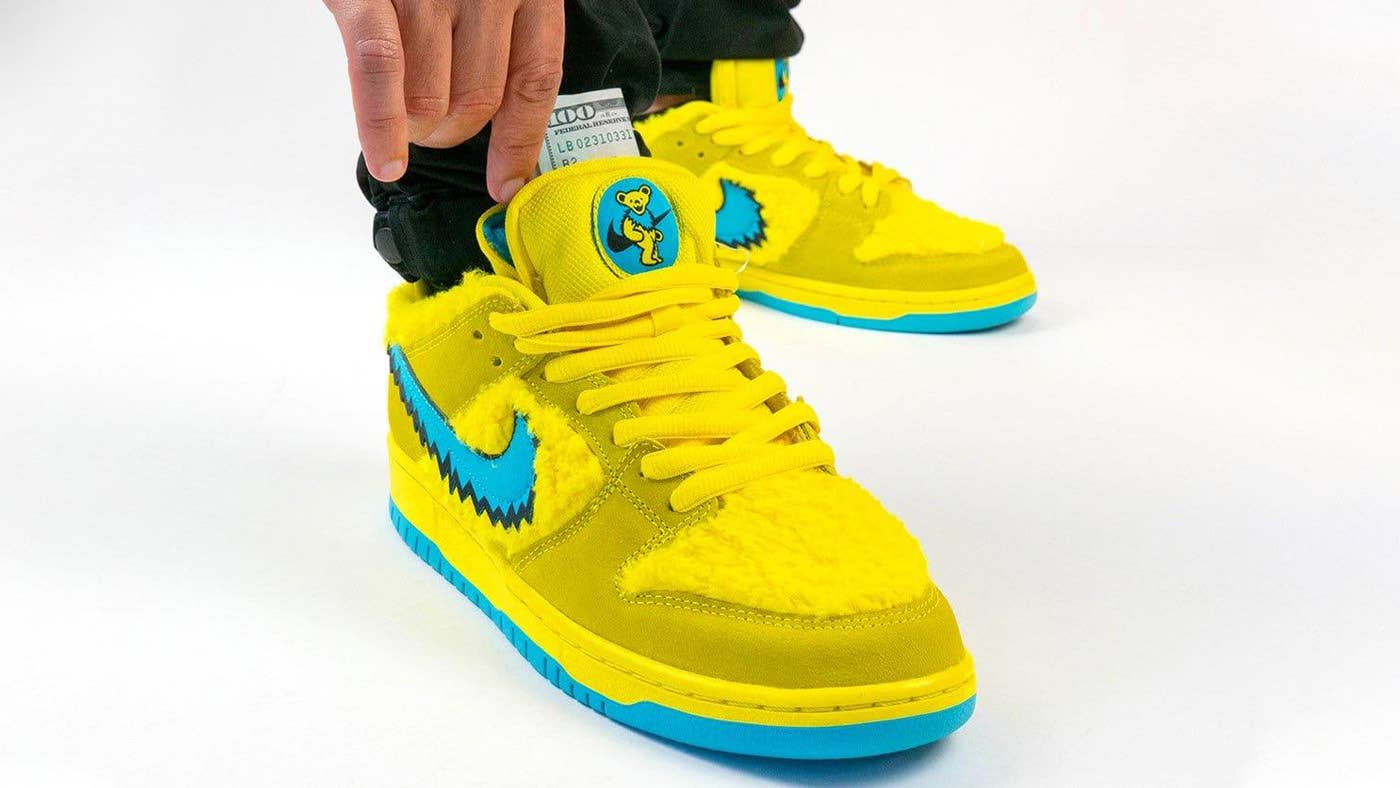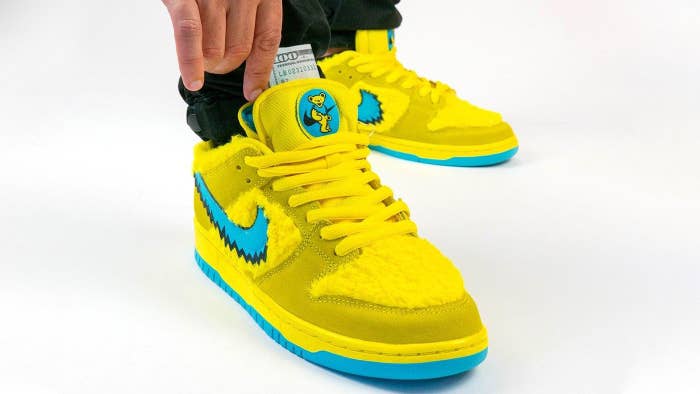
When Flight Club opened its doors in 2005, it only sold one pair of sneakers for over $1,000, a sample pair of Denim SB Dunks from 2002, A decade later, the 10th-most-expensive shoe that the shop sold that year was a pair of Nike Air Yeezy 2s for $6,000. Times have changed. In 2020, $1,000 isn't the upper echelon for sneakers—it's a starting point. If a shoe passes this threshold, it means something. Falls deeply below it on the secondary market? It's either slept on or viewed as a steal. But how did we even get to this point?
It's not completely fair to compare sneaker prices in 2005 to those of 2020. One thousand dollars 15 years ago is now worth over $1,300, which means that a dollar's value has decreased by nearly one-third. But the sneaker world has also changed, too.
The second-most-expensive shoe that Flight Club sold in 2005 was a black pair of the Supreme x Nike SB Dunk Low, for $998, which released three years earlier in 2002 and only at the company's physical location in New York City. You had to be there to get them, and not everyone who bought them knew then how much they'd be worth at some point, and there wasn't a seamless way of re-selling the shoes. You could post them on eBay and hope to get whatever someone was willing to bid, or maybe find someone on an internet forum like NikeTalk and arrange a deal. There was no StockX to sell someone shoes with just a click, and sneaker "culture," as we know it now, was just a core group of people online—there was no Nike SNKRS app, no Yeezys. Everyone and their mom wasn't trying to buy and sell shoes.
But slowly it all started to spread. No longer were the only expensive sneakers deadstock pairs of original Air Jordans that you'd track down from Japan, memorabilia signed by athletes or celebrities, or unreleased samples or prototypes. The brands themselves started to get hip to the market of limited supply on cool-guy shoes and created an early version of this ravenous market to capitalize on it.
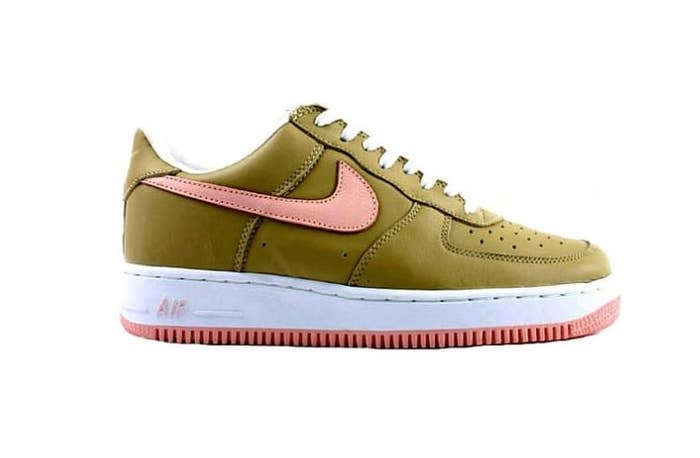
Early sneakers from this trend included the Nike Air Force 1 "Linen," which only released in Japan; Undefeated's collaboration on the Air Jordan IV; Futura's "For Love or Money" pair of the Nike Dunk High; or both Diamond Supply Co. and Staple's reworking of the Nike SB Dunk Low in 2005 to fanfare and riots. Nike even produced two pairs of luxury Air Force 1s made in Italy from crocodile and anaconda skins that retailed for $1,000 a piece in 2007 for the sneaker's 25th anniversary.
After that initial wave of early 2000s hyped sneakers, the big money started to float into shoes that felt a little more calculated and polished, not pairs that were part of a subculture that bubbled into the mainstream. You had the Nike Air Yeezy 1 in 2009, the Nike Air Foamposite One in a "Galaxy" colorway (that had people offering their cars for them) in 2012, and Nike's LeBron 8 made in a "South Beach" color scheme to celebrate LeBron James going to the Miami Heat in 2010.
Not only were the resale prices jumping on shoes, but also the retail. The Yeezy 1 was $250, the Galaxy Foamposites were $220, and the LeBrons were $160. In comparison, the box price on Nike SB Dunks was $65.
The hype-iest hype shoe of all them was the Nike Mag, which debuted in Back to the Future Part II in 1989 and became a reality in 2011. The shoes were sold via auction on eBay to benefit the Michael J. Fox Foundation. Fifteen hundred pairs were released and sold between $2,300 and $9,959. The shoes released with their signature auto-lacing in 2016, were limited to 89 pairs, and would resell for over $20,000. The latter release was only available through raffle systems, which made them harder to obtain.
A new economy of $1,000 sneakers started to pop up after the post-recession years, when people found it difficult to spend so much on sneakers.
There were still niche sneakers such as Ronnie Fieg's work on ASICS from 2011-2013, with very limited pairs selling for a lot of money. Supreme released a Foamposite in 2014 that caused a riot and forever changed the brand's in-store Nike release policy.
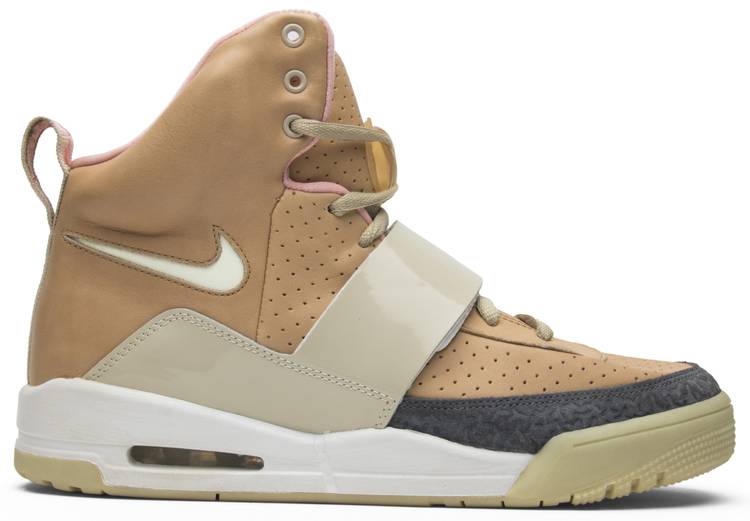
The Air Jordan 1, in its original black/red and black/royal colorways, saw a huge resurgence in 2014 and 2015, when Kanye West took a liking to the model. Almost out of nowhere, pairs would sell for over $1,000. His first run of Yeezys with Adidas would soon follow. If you could get yourself a pair of the original 350s, you had a grand.
The same went for Virgil Abloh's first collection of Off-White x Nike and Air Jordan sneakers from 2017. I bought a pair of the original Prestos and quickly turned them for $1,250 just 10 minutes later. It was a no-brainer. If an Off-White x Nike sneaker didn't resell for upwards of a $1,000, it was thought to be cheap. If it was going for less than $100 over retail, it was viewed as a "brick." Some might view those as consolation prizes for those who couldn't get their hands on the more hyped and limited sneakers from the line.
It's safe to say that the amount of attention paid to these ultra-limited, uber-valuable sneakers has caused people to care less about sneakers that aren't going to go for buckets of cash. It's not rare to see sites where what you want is long gone and nearly everything else is available or on sale.
For some kids these days, marketplaces like StockX, Stadium Goods, and Flight Club are the sneaker stores, not the boutiques that initially sell the shoes that they want but can't buy. StockX co-founder Josh Luber admitted on a recent episode of the Complex Sneakers Podcastthat the company sometimes can even outrank Nike in SEO. If that's a reality, the normalization of paying over retail is here.
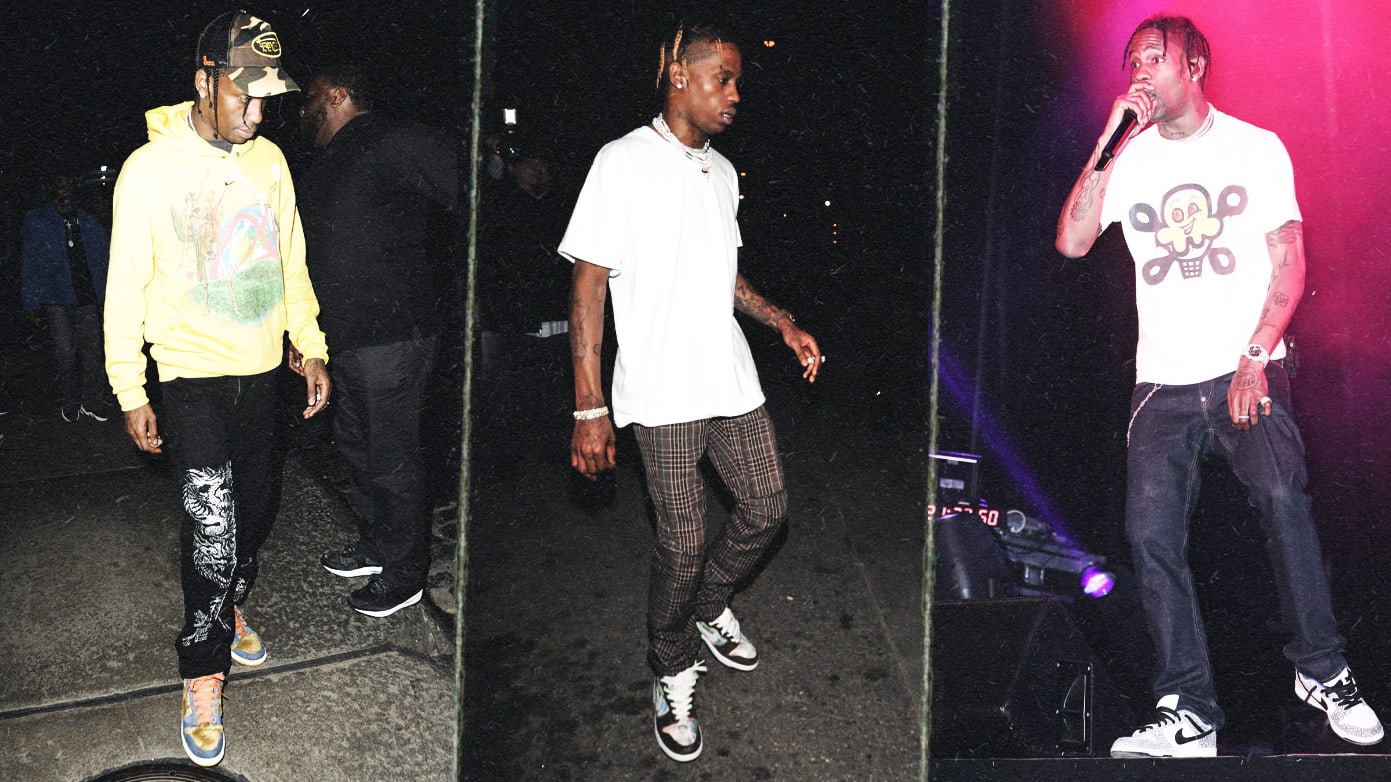
If the $1,000 sneaker 10 years ago was all about Kanye West, then it's shifted to Travis Scott in 2020. A handful of his sneaker collaborations—Air Jordan 1, Air Jordan IV, Air Force 1—all resell for four-figure sums, while the ones that sell for under that, like the Air Jordan VI, Air Jordan 1 Low, can be viewed as a steal on the secondary market. The bigger effect that Travis has had on the $1,000 sneaker isn't just his own sneaker collaborations, but rather the impact on the shoes that he wears. As of late, it's been Nike SB.
Shoes such as the Stussy x Nike SB Dunk go for $2,500, while the Newcastle Dunk, which went on sale when it came out, now sells for over $1,000. The resale price went up after he wore each shoe. Even the Nike SB "Trail End" Dunk from 2007, a shoe that most might have forgotten, sells for over $1,100, a side effect of its colorway being close to Travis Scott's Air Jordan 1 project.
He even received is own SB Dunk, which resells for over $1,000.
Even SB Dunks that fall outside of the sneaker's golden era, such as the “Skate or Dies” or “Vegas Golds,” go for over $1,000. It might be the popularity of Nike SB, the rarity of the shoes, or a newer generation buying into a culture it didn't grow up in—or maybe it's coordinated buys from resellers to push the market—but a lot of it is because of Travis Scott.
This SB Boom with $1,000 sneakers has also transferred over to the recent Nike SB releases, such as the Ben & Jerry's Dunk, the collaboration with the Grateful Dead, and soon-to-release Civilist Dunks.
These collaborations are engineered for hype and success, as if they were built in laboratories that focus on Instagram algorithms that project future resale values, rather than something that Nike SB would have organically done 15 years ago. Maybe I'm wrong, but a lot of these projects and collaborations seem too big to fail.
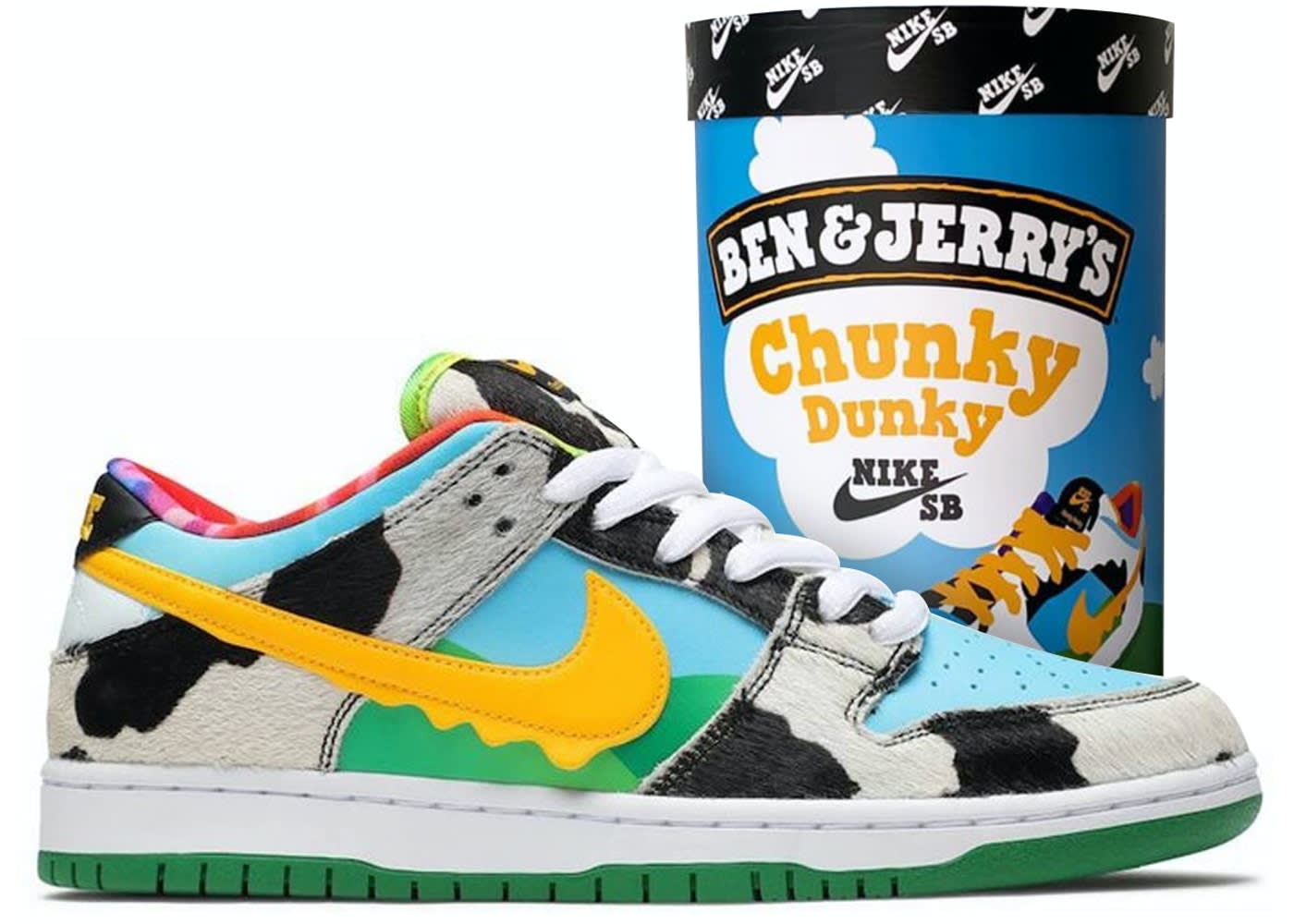
Take the Dior x Air Jordan 1s, for instance. The retail value of $2,000+ and the scarcity of the 13,000 pairs instantly catapult it into the "Sneaker of the Year" conversation, whether people have made up their minds on if the sneakers are good or not.
There's also been a Kith x Nike Air Force 1 that released only in Japan, which was slated for the 2020 Olympics, that has resale values of over $1,000. Abloh's work on the Off-White x Air Jordan Vs has been acclaimed as the best sneaker design this year, but seeing prices fall below $1,000 had some scratching their heads. Could it even be considered the "Sneaker of the Year" if it didn't resell for $1,000 and the Ben & Jerry's Dunks sold for more? It sounds like a copout on a true conversation on what equated to a good or better sneaker, but it's something that's been taken into consideration.
When people are spending retail of nearly $1,000 on high-end sneakers, it's no surprise to see more than a few sneaker releases from athletic brands cross that threshold, too.
Even this week, with Kobe Bryant's birthday, Nike released limited-edition versions of his shoes, which had some irate that they weren't made in mass quantities. And they instantly resold for over $1,000.
Is there a moral to $1,000 sneakers being a thing? Not as much, but they're the new norm, and the scale that everything gets based on from here on out. Welcome to the future.

